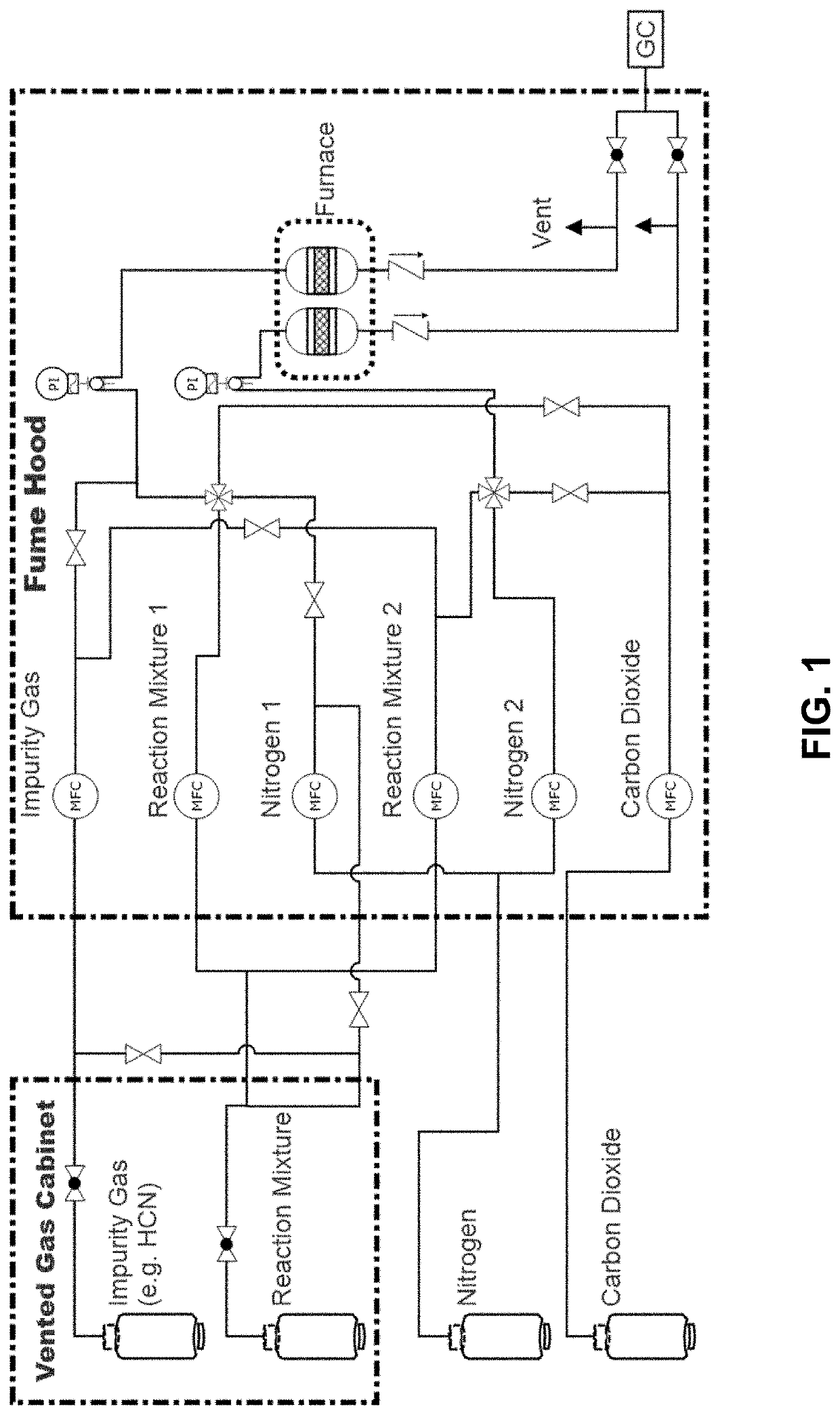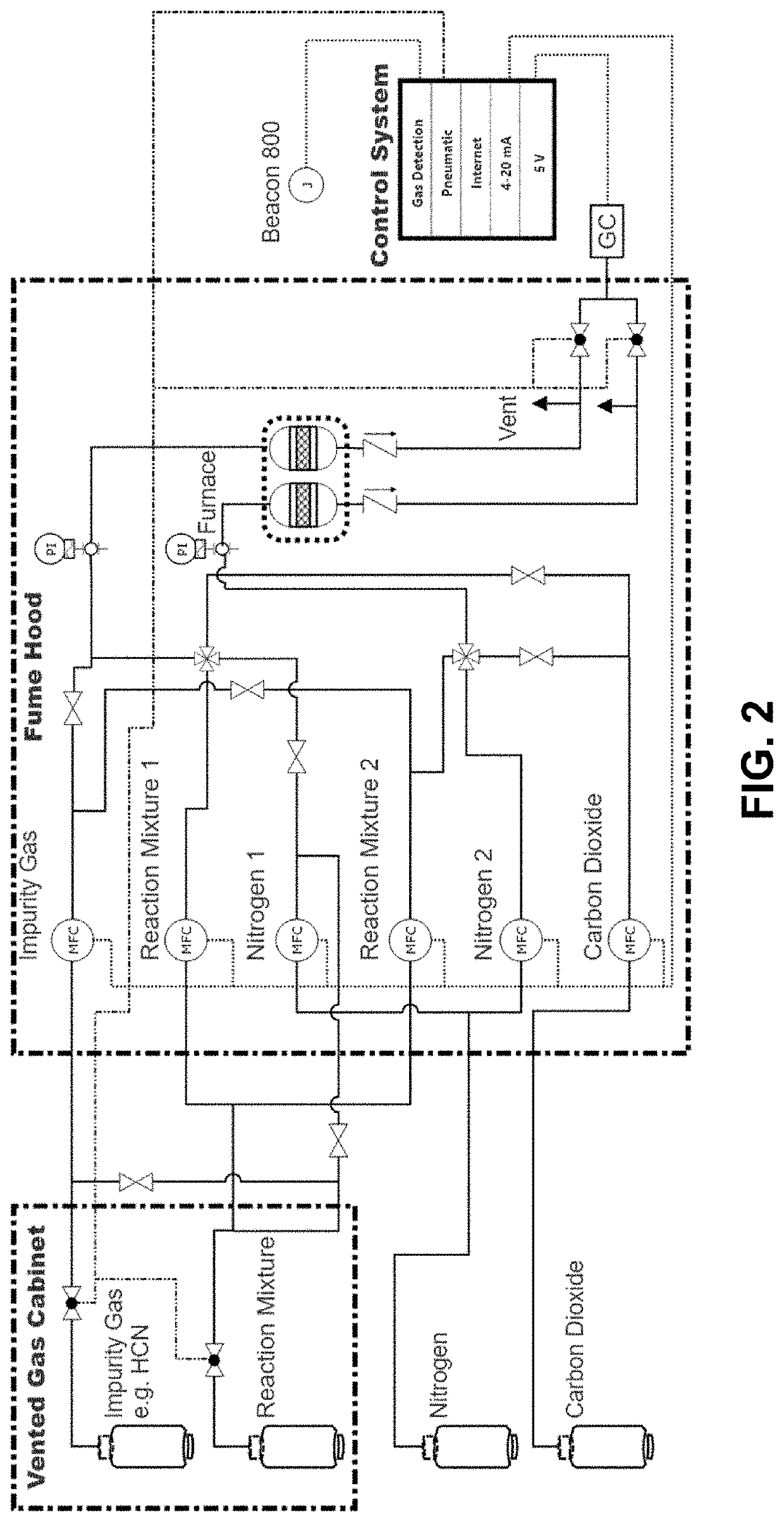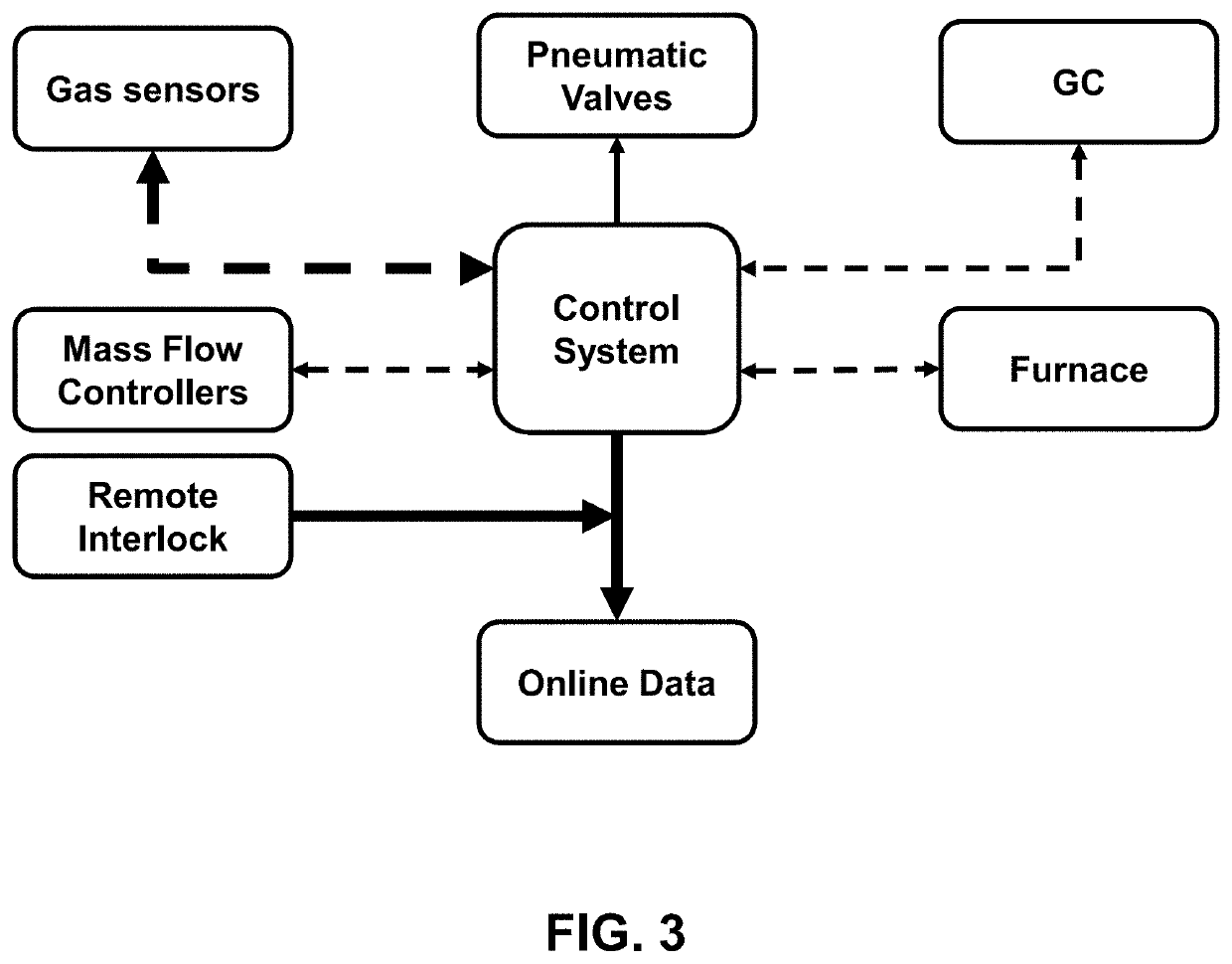Modular reaction control system for live monitoring of long-term and/or multi-channel reactions
- Summary
- Abstract
- Description
- Claims
- Application Information
AI Technical Summary
Problems solved by technology
Method used
Image
Examples
Example
Example 1— Catalysis of Greenhouse Gases to Value-Added Products
[0089]Greenhouse gas emissions are of vital concern, such that multiple governments of this world have created goals for lowering emissions. Locally, Wyoming has 16 of the nation's largest natural gas fields. These fields include the Jonah and Pinedale fields, with gas reserves estimated over 40 trillion cubic feet. [1] These major gas reserves have pushed Wyoming to the third highest source of natural gas flaring in the US. Natural gas is primarily methane, with varying amounts of ethane, propane, and higher hydrocarbons. Additionally, natural gas often contains sulfur impurities such as H2S and COS. Currently, it is simpler and more cost effective to flare the gasses in remote locations rather than clean impurities and transport it via trucks or trains. Flaring activity of this magnitude has driven ecological and economical pressure to develop technologies that can mitigate ecological harm. World-wide tightening of em...
Example
Example 2—Safety Features
[0104]The illustrated control system has built-in safety features that are programmed on a FPGA and lower-priority safety features utilizing INITIALSTATE. This allows for microsecond-response time, true hardware parallelism and robustness, bypassing the operating system. FPGA-level alarms include gas sensor alarms and fail state, emergency stop button, opened furnace door, and over-temperature. Lower-priority alarms are pressure changes or maximum pressure in reactor tube and the remote interlock. For these alarms to function properly, a combination of a digital and analog I / O may be used. Digital inputs may include gas sensor alarms 1 and 2, gas sensor failed, emergency stop button, mains power, furnace door and contactor feedback, while reactor and plant pressure may be analog.
[0105]Intelligent alarm and control settings may allow the functionality of the system to continue in non-hazardous situations, while reacting decisively and immediately to hazardous...
Example
Example 3—Demo Results from the Reactor Line and Controller
[0125]Basic Experimental Procedure
[0126]Typical experiments require a 100 mg aliquot of a Ni based catalyst on a cerium oxide support. Multiple experiments were performed to determine an optimal flow rate and catalyst mass. The catalyst is loaded into 7 mm I.D. quartz reactor tubes with a quartz wool bed to form a plug-flow reactor as shown in FIG. 12. The reactor is inserted into the furnace in a down-flow mode. This catalyst requires activation via reduction at 550° C. under 50 ml min−1 hydrogen. Flowmeters used are Aalborg DFC 26 configured for the appropriate gasses. Hydrogen flow and furnace temperature are set via the touchscreen control panel as shown in FIG. 4. After an hour of reduction at 550° C., hydrogen flow is replaced with nitrogen flow then the furnace is set to the required reaction temperature. Introducing an inert gas such as nitrogen allows for temperature adjustments while maintaining the current state o...
PUM
 Login to View More
Login to View More Abstract
Description
Claims
Application Information
 Login to View More
Login to View More - R&D
- Intellectual Property
- Life Sciences
- Materials
- Tech Scout
- Unparalleled Data Quality
- Higher Quality Content
- 60% Fewer Hallucinations
Browse by: Latest US Patents, China's latest patents, Technical Efficacy Thesaurus, Application Domain, Technology Topic, Popular Technical Reports.
© 2025 PatSnap. All rights reserved.Legal|Privacy policy|Modern Slavery Act Transparency Statement|Sitemap|About US| Contact US: help@patsnap.com



